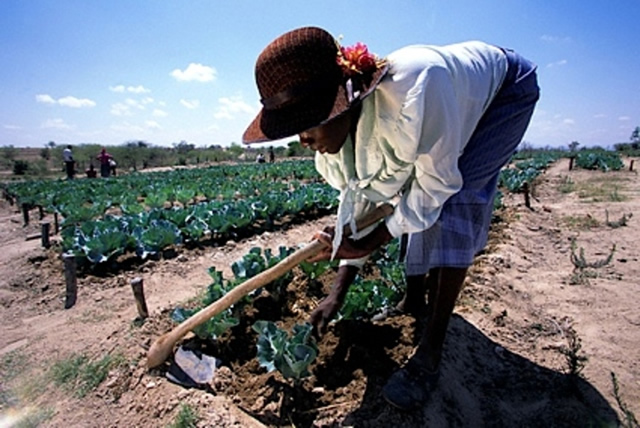Spare a thought for the rural woman


Rural women in Zimbabwe and the region are highly dependent on local natural resources for their livelihood because of their responsibility to secure water, food and energy for cooking and all sorts of other chores in the household
Ruth Butaumocha Gender Forum
The onset of the rainy season signalled the start of land preparations in both rural and urban areas as farmers mobilised the cropping season’s inputs.Early morning vigils, criss-crossing between the fields and the kraal to yoke the cattle and till the land, has become the order of the day, as families make frantic efforts to beat the planting deadline for most crops.
It is that time of the year when each member of the family naturally has an obligation to work hard and contribute to the anticipated good harvest once the season is over.
Good as the farming season may sound, the majority of women particularly in rural areas, attests that the season is one of the most challenging periods, in which they work hard and hardly get any recognition for their efforts.
It is the period of the year, which most women wish all agricultural activities were mechanised, to ensure they can at least rest and concentrate on their health and that of the family.
For the duration of the farming season, a normal day for any woman in the rural and farming communities starts as early as 3am and ends just after midnight.
The day is characterised by hard menial work that includes fetching water from a village borehole, situated kilometres away from the homestead, preparing food for the whole family before joining the rest of the family in the fields.
Even when the whole family knocks off after 5pm, with the man of the house, joining the trek to the local shopping area to wind off the pressure of work by drinking one or two mugs of the local brew, the woman’s real work would have just begun.
Fetch water, wash and prepare supper, the list of her revolving and never-ending chores is endless.
Her brief but important moment of rest is when she has to go to bed and sleep, for a few hours, before she wakes up again to prepare for yet another day.
It is a life, thousands of women who live in urban areas would never dream of living, even for a day, and yet it has become a routine for the majority of women who live in rural and farming areas. They hardly ever get time for themselves because they have to shuttle between the needs of the family and community expectations.
For all their efforts, only a few will fortunately enjoy the toil of their sweat, because the man of the house will naturally take the huge chunk of the farm proceeds under the guise of preparing for yet another season, while the whole family shares a morsel.
The effects of climate change on the farming season in the last few years, has not made any life easier for the rural women who now have to work harder than before to ensure the family is adequately taken care of.
Rural women in Zimbabwe and the region are highly dependent on local natural resources for their livelihood, because of their responsibility to secure water, food and energy for cooking and heating throughout the year.
As already been witnessed in the country in the last few years, the effects of climate change has seen an increase in droughts, uncertain rainfall patterns and deforestation, factors which are increasingly making it harder than before to secure all these resources.
Naturally, rural women bear the burden of securing all these resources, further adding the workload on their already busy schedules.
Surprisingly, the nation at large, does not appreciate the unpaid work that women do, and neither is it added to the country’s Gross Domestic Product. It’s worthless, economists say!
However, research on the ground show that women do contribute a lot in most sectors especially in agriculture.
On average, women comprise 43 percent of the agricultural labour force in developing countries. This figure ranges from 20 percent in Latin America to between 50 to 70 percent in parts of Africa and Asia, and even exceeds 80 percent elsewhere around the globe.
In most developing country regions, women who are employed are just as likely, or even more likely, than men to be in agriculture.
Almost 70 percent of employed women in Southern Asia and more than 60 percent of employed women in Sub-Saharan Africa work in agriculture.
Women work in agriculture as farmers on their own account, unpaid workers on family farms and as paid or unpaid labourers on other farms and agricultural enterprises.
They are involved in both crop and livestock production and either commercial or subsistence levels.
Not only do they toil on the land from morning till sunset, they also produce food and cash crops and manage mixed agricultural operations often involving crops, livestock and fish farming.
Looking at the above statistics, it is clear that agricultural labour-force statistics may actually underestimate the amount of work that women do.
This is so because women are less likely than men to define their activities as work and they are less likely to report themselves as being engaged in agriculture and they work on average, longer hours than men.
With the rains pounding every day, an indication that Zimbabwe might actually have a good farming season, let us spare a thought for the rural women.










Comments